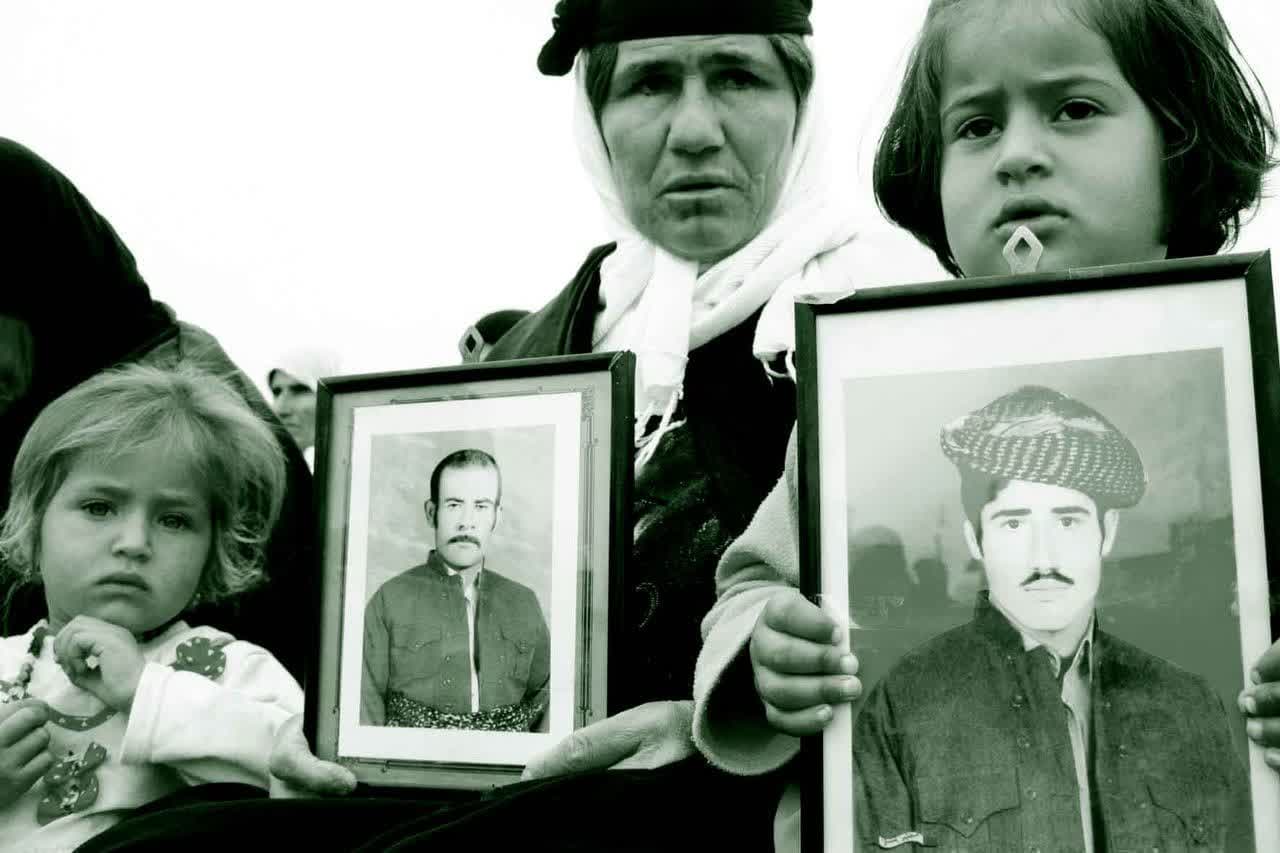 The third narrative of the encounter between Rajavi and Iraqi Kurds belongs to Haeri, an old ex-member of the MEK, who describes the events and provides contexts that indicate prior planning for making use of the MEK for oppression of Iraqi Kurds. As mentioned earlier, the areas formerly inhabited by Kurds were temporarily "munificently bestowed" on Rajavi by Saddam. Haeri writes:
The third narrative of the encounter between Rajavi and Iraqi Kurds belongs to Haeri, an old ex-member of the MEK, who describes the events and provides contexts that indicate prior planning for making use of the MEK for oppression of Iraqi Kurds. As mentioned earlier, the areas formerly inhabited by Kurds were temporarily "munificently bestowed" on Rajavi by Saddam. Haeri writes:
"According to the testimony of many MEK members present at the place and those to whom I talked in the guest houses before going to prison and also in the prison, the MEK had occupied a significant portion of the Kurdish regions, including the cities of Tuz Khurmatu, Kifri, Suleiman Beg, and Khanaqin before the Kurds came to these areas.
In the city of Suleiman Beg, the first operation of the MEK against the Kurds began in the vicinity of the railroad building with the entry of a minibus into the city. This minibus was full of peshmerga who intended to liberate the city. A brigade of the liberation army under the command of Hassan and another under the command of Ahad attacked this minibus on two fronts. In the initial moments, the minibus caught fire and its passengers who had already disembarked quickly scattered and retreated towards Kifri.
The weapons utilized by Peshmerga were AK-47 and SVD, but the MEK attacked them with BMP and A55 tanks and other heavy weaponry. Some of these Peshmerga hid under the railway bridge. Without intending to capture or take them hostage, the MEK demolished the bridge with artillery and buried them the next day near the same bridge. The Peshmerga consisted of a total of sixteen members, the majority of whom were wearing rubber boots and tattered clothing.
At the intersection of Tuz, Suleiman Beg, and Kifri, the MEK stopped a red Benz truck carrying ten tons of ammunition for the Kurds. They forced the driver, a companion, along with two kids to exit the truck and they stood there in a state of submission.
The MEK fired a 23mm cannonball at the two individuals, resulting in one of them suffering a catastrophic head injury, while the other being wounded. One of the kids fell onto the lifeless body with the shattered skull, crying and wailing. It appeared that the deceased driver might have been his father. There is no news about the fate of the wounded person and the two children.
Many Iraqi Kurdish soldiers, who had fled the front lines with the intention of returning to their families, were crossing the mountains due to the fear of the Iraqi army and the insecurity of the roads. Along the way, they would fall victim to MEK attacks and be killed.
During the war, one of the MeK commanders named Reza Karamali was killed by the Kurdish defenders after issuing an order to shoot at the Kurds’ house in the city of Tuz, and then his body was buried as a martyr in the Ashraf Garrison.
In addition to Reza Karamali, dozens of members who were against the war with the Kurds were also unintentionally killed in Kurdish areas because, due to the wrong information given to them by the MeK, they thought that they were fighting with the regime’s forces dressed in Kurdish clothes.
In order to cover up the killing of the Kurds and to interfere in the internal affairs of them, the MeK named the war with the Kurds Operation Pearl (Morvarid in Farsi) claiming that it was a counterattack to the regime’s forces who had attacked their base.
While, it was only in Khanaqin, near the Iranian border, that a part of the MeK forces who were stationed in a zone called the Susan Axis, were attacked by the regime’s forces, and in other areas such as Tuz, Jalawla, Sulaiman Beg, and Kifri there was no trace of the IRGC forces.
In this operation, four teenagers under the age of 20 were arrested and brought as IRGC forces in front of Iraqi TV cameras in order to prove that Iraqi Kurds were not all Kurds, but regime’s agents were also among them.
If, according to Rajavi’s claim, the regime had attacked the MeK, the conflict should have taken place around the Ashraf Garrison, not in Iraqi Kurdish cities which are miles away from the MeK’s location.
On the other hand, during this war, the MeK had brought many sheep, chickens and roosters from Kurdish areas with them to the Ashraf Garrison. Did the regime bring these sheep, chickens and roosters to Iraq?!
This shows that the MeK took their artillery and tanks out of their bases and clashed with the Kurds in areas far away from the garrison. If we accepted that the Iranian regime intended to attack Iraq due to the weakness of Saddam’s army, it would advance to Baghdad without any obstacles given the prevailing conditions at that time. [However] this claim is completely false.
Rajavi claims that its forces clashed with the IRGC forces. This lie becomes more apparent when we know that one of the high-ranking members of the organization, named Nader Afshar, along with two others, one of whom was a translator and fully fluent in Arabic, were killed by a sword in the Shiite areas of southern Iraq. These three people went to the south to spy, and their bodies were brought to the Ashraf Garrison and memorial stones were built for them.” (1)
References
1. Shams Haeri, The Marsh, p. 127-130.
